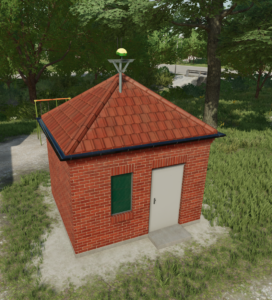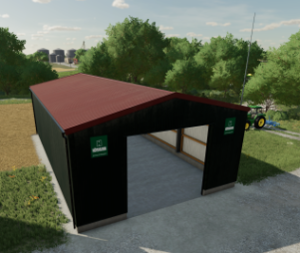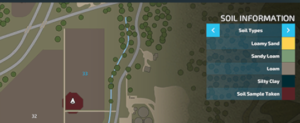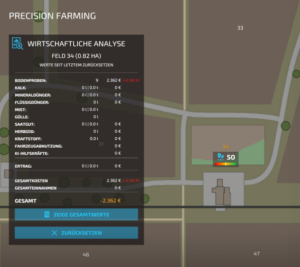
Precision Farming Environmental Tutorial
Since Precision Farming is all about tilling the soil as little as possible and only using as much herbicide and fertilizer as necessary, this DLC changes the way we play the game a bit. Since we no longer want to plow and cultivate to keep soil life, moisture and erosion as low as possible, you should set “Plowing Necessary” to off in the game options. This tutorial refers to getting the best possible environmental score, as this will give you up to 15% bonus on all sales of crops and products from productions, depending on the value.
By placing the RTK base station, helpers can work faster and more effectively. So it is recommended to build RTK station when playing with helpers to save money and diesel.



The most important thing now is to know what soil types make up our fields. To know this we have 2 possibilities:
- One buys the Scout probe from ISARIA, takes soil samples manually and sends them in.
- You buy the soil information via the Precision Farming tab in the ESC menu.





After harvesting, mulching can be done as usual, as this activity does not affect the eco rating.
After mulching, lime should be applied to bring the PH of the soil to the correct value. It is important that this happens before seeding so that the lime can be worked into the soil by the seeder.
You can check the PH value in the Precision Farming menu in the ESC menu. While working you can see the PH map in the minimap. If you have activated the automatic application rate, the spreader will always apply the required value for the current soil.





Now that we have improved the PH value of the soil, let’s take care of the nitrogen value. So that the applied amount also corresponds to the needs of the plants, the soil sensor should be used for this. The sensor can I be installed in a vehicle or used as an attachment.
If liquid manure or fermentation residues are available, they can now be applied to provide the soil with an initial fertilization. Sensors can also be attached to slurry tanks for monitoring.


Now we can sow oil radish if, for example, the sowing of the desired crop can/will not take place until next year, to give the soil another portion of nitrogen.
Precision Farming uses only no-till drills for seeding.
Once seeding time arrives, the desired crop is now seeded directly over the mature oil radish. Immediately after seeding, any nitrogen that is still missing can then be added to the soil. This should have given the plants the nitrogen they need. The nitrogen values can also be monitored in the ESC menu.

Here, too, you can see in the minimap the state of the fields and where you have already been.



Another way to supply the soil with the right amount of nitrogen is to fertilize directly after liming. This works both with artificial fertilizers and with liquid manure and digestate. To do this, you can select the plant to be sown next on the fertilizer spreader or slurry tanker.
After that, the seed can be sown again with a no-till machine.
The only thing to note here is that the evaluation for the nitrogen value, i.e. for the fertilization, is only updated after the harvest.


Now we just have to take care of the weeds. Once the field is in the 1st growth stage, we can fight the weeds.
For this, however, we do not use a hoe or harrow, but herbicide.
With John Deere’s R732i PowrSpray, equipped with “See & Spray” technology, only a minimal amount of herbicide is needed and we only spray where the weeds are. By using herbicide, we reduce yield slightly but get the highest possible environmental rating.
Now all that remains is the harvest. The field should get a rating of 100 points with this procedure. If the entire farm has a rating above 50 points, we get a bonus of up to 15% on all sales of crops and production goods, if the rating is below 50, you have to pay a penalty of up to 15%.


